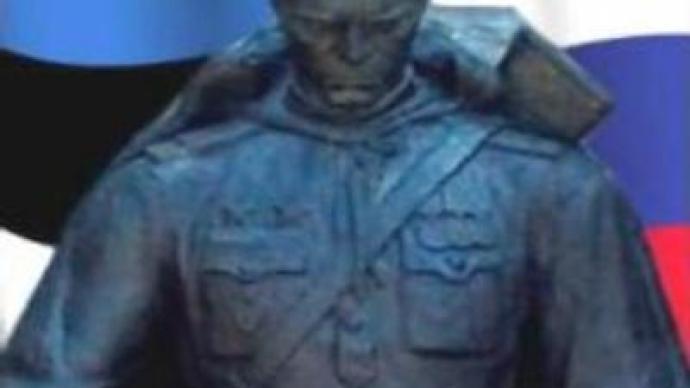Russian-Estonian dispute: WWII - liberation or occupation?

The recent violent clashes between police and rioters in the Estonian capital, Tallinn, over the removal of the Soviet Soldier memorial, have shocked both Russia and Estonia.
Russia regards Estonia's actions as blasphemy against the memory of, arguably, the greatest victory in world history, while Estonia sees its liberation from the Nazis in 1944 as occupation followed by its absorption by the Soviet Union.The violence has served to highlight the gap that exists between the country's two main population groups – ethnic Estonians and ethnic Russians.Estonia became a sovereign state soon after World War I, and by 1939 it had been independent for almost 20 years. After a pact between Hitler and Stalin, Soviet troops arrived in 1940 and the Estonian parliament voted to become part of the Soviet Union. Nazi forces pushed the Soviets out in 1941 but the Red Army returned in 1944 and remained for half a century.Russia focuses on what it sees as the Soviet liberation of Estonia from Fascism.But most Estonians view the Bronze Soldier as an occupier, a humiliating reminder of the time their country was forcibly absorbed into the Soviet Union.The government website states: “The recapture of Tallinn by Soviet forces was far from being a ”liberation“ for the Estonian people. It merely marked a change in foreign regimes and the beginning of a nightmarishly repressive occupation that would last for nearly 50 more years.”Estonian historian Lauri Vahtre is working on a new textbook for Russian students learning about his country's past. He says he is just cleaning history of lies.“It is a question of historical facts. We have to check what happened after the Soviet army came in and what happened was it was the most miserable time for my people – marked with words like deportation, russification and genocide,” he notes.But Russia is accusing Estonia of rewriting history.“Estonians say they were invaded by Nazis and then by the Soviet Union. They are trying to persuade the EU that the Nazi regime and Soviet regime were one and the same. Of course, it was not a paradise for Estonia at that time but they were viewed as fully fledged members of the Soviet society and reaped the benefits,” says Vladimir Simindey, a Russian Historian and Political Analyst.Russia has denounced the removal of the monument as a “blasphemy”, calling it an insult to the war dead and to the millions of veterans who fought alongside them to rid Europe of fascism.One such veteran is 87-year-old Arnold Meri.“I was in the Estonian division of the Red Army. The thing is that it was not just the Red Army that liberated Estonia but we, Estonians, who helped to liberate our homeland. That is why the current situation in Estonia is like a loss of respect to those who paid for the liberation of Estonia with their lives,” he says.Mr Meri, alongside hundreds of other veterans, will visit the bronze soldier at its new site on May 9, Victory Day, to pay his respects to the war dead.
You can share this story on social media:












